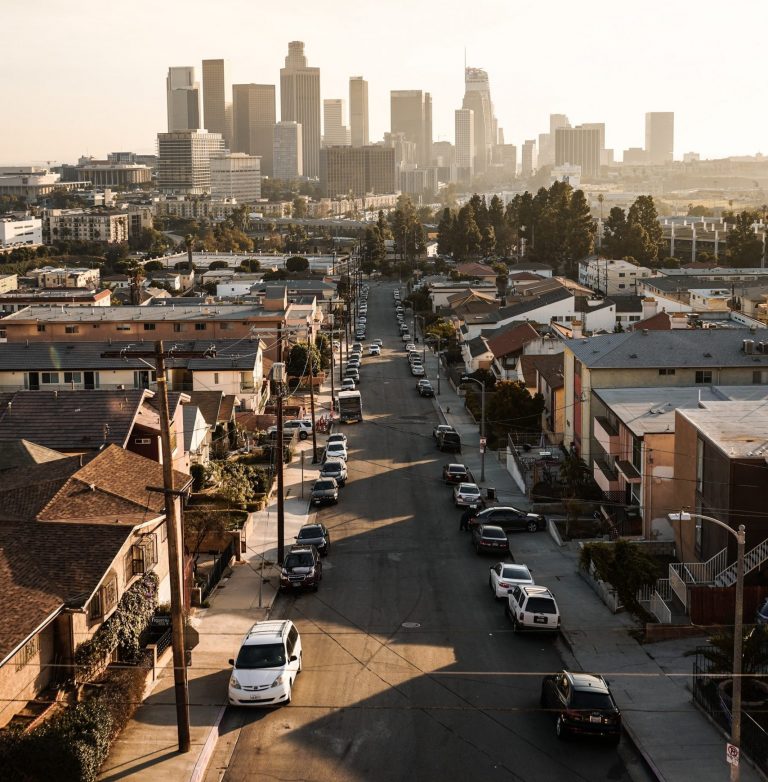Across major cities in the United States, a lack of green infrastructure has been brought to light as shade and tree canopy coverage are being measured through tree equity analysis. Rising temperatures and minimal shade coverage offer little escape from the sweltering heat some citizens endure on their commutes and living in cities throughout the United States. Researchers are finding that there is a disproportionate amount of shade coverage in certain areas, drawing concerns that the expanse of shade is not equitable. Local communities, non-profits, and city governments are evaluating the need to increase tree canopy coverage in an equitable fashion.
One city that is evaluating and committing to expanding tree coverage for equitable shade is Los Angeles. The city has pledged to plant 90,000 trees by the end of 2021 to increase tree canopy coverage in the urban environment. The initiative is part of the Green New Deal directive led by Mayor Eric Garcetti. One of the key principles is to deliver environmental justice and equity through expanding access to benefits included in the plan.

GIS offers spatial analysis tools to enhance the work to equitably plant trees for increasing shade coverage. Using spatial modeling, the allocation of 90,000 trees can be calculated based on studying demographic, environmental, and socioeconomic geographies to better pinpoint areas in greater need of shade coverage. The approach covers equitable distribution of tree planting and highlights access to environmental benefits.
There are factors that need to be evaluated for equitable shade coverage expansion. The use of spatial analytics tools with geographic information enriched with demographic, socioeconomic, and environmental data will lead to more equitable decision-making for shade coverage planning. Through the use of GIS software available from Esri, a workflow has been developed using ArcGIS Pro, Spatial Analyst Extension, and the Business Analyst Desktop Suitability Analysis tool to develop an equitable tree allocation model for Los Angeles.
The Learn ArcGIS Lesson Shade equity – Determine tree planting with suitability analysis guides users through the process of developing a model that allows decision makers to equitably allocate trees to increase shade coverage in their city. The lesson includes the following:
- Examining variables to identify three objectives for the tree planting project.
- Conduct exploratory data analysis to develop a scatter plot and bivariate map to visualize disparities. This will include understanding relationships between tree canopy and income, mapping demographic data (senior population) with tree canopy, and using data engineering to compute disparity indices for each variable.
- Working with raster datasets and using the Zonal Statistics as Table tool to estimate air quality and land surface temperature at the census tract in Los Angeles.
- Using the Suitability Analysis tool to standardize and apply weights to the disparity index values to create a tree planting priority score.
- Using tree planting priority score for each census tract to allocate all 90,000 trees across Los Angeles.
Below is a web map application showcasing the final results from the shade equity learn lesson. You can evaluate the allocation of the 90,000 trees pledged to be planted throughout the city by zooming in and clicking on a census tract. Then on the right-hand side of the application click the “info” button and view the number of trees assigned to the selected census tract.
Tree Allocation by Census Tract
The workflow is focused on Los Angeles as the study area, but the lesson has been built so that users can apply the concepts, data, and modeling techniques for expanding tree coverage equitably in their own city.


Article Discussion: